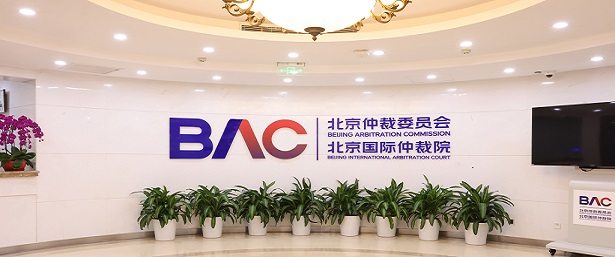
Publish time: Thu Apr 20 10:38:54 CST 2023

Various terminologies are used across different countries and institutions for dispute review. In the UK, the legal term is “adjudication”, while in the US and Canada, “dispute review board” or “dispute resolution board” are more common.
The International Federation of Consulting Engineers (FIDIC) contracts use “dispute adjudication board” or “dispute avoidance/adjudication board”. Some international organisations or institutions prefer the concise terminology of “dispute board”.
For example, the International Chamber of Commerce uses “dispute board”, which includes “dispute review board”, “dispute determination board” or “combined dispute board”.
The Dispute Resolution Board Foundation and Japan International Co-operation Agency also use “dispute board” to generally refer to various terms and methods for dispute review.
There are both permanent dispute review boards and ad hoc dispute review boards.
Parties may, at the time of signing a contract or within an agreed time limit, determine the members of a dispute review board and set up a permanent dispute review board to track contract performance and assist in dispute prevention.
A permanent dispute review board may review relevant disputes according to the application of the parties. The parties may also set up ad hoc dispute review boards to review particular disputes.
DISPUTE REVIEW IN CHINA
In the early days, China mainly used the dispute review board for World Bank loan projects. On 1 November 2007, nine ministries and commissions, including the National Development and Reform Commission (NDRC), jointly released the Standard Construction Bidding Documents (2007 Version), in which clause 24.3 of the general contract provisions expressly provided the mechanism of dispute review and dispute resolution.
In the NDRC’s Guidelines for Use of Standard Documents, the drafter expressed hope that fair resolution of construction project disputes might be achieved through a panel of experts that was completely independent of the contracting parties.
This suggestion was based on international experience and was the first time the central government had provided dispute review as a resolution mechanism for disputes in construction project contracts.
During the drafting, there were discussions on whether dispute review should be a mandatory process for the resolution of disputes.
However, after comprehensively evaluating and considering the current situation of PRC law, the drafters decided against the idea.
The release of the above-mentioned standard documents promoted the implementation of the dispute review mechanism in China.
On 20 January 2009, the Beijing Arbitration Commission/Beijing International Arbitration Centre (BAC) adopted the BAC Rules for Construction Dispute Review.
This adoption made the BAC the first arbitration institution in China to implement rules for dispute review of construction project disputes, and to establish a recommended register of construction dispute review assessors. These assessors consist of experts, scholars, lawyers and enterprise representatives.
Since then, many institutions have launched rules for dispute review. As the standard documents use the term “dispute review panel”, rules promulgated by Chinese arbitration institutions usually include this term.
For example, both the BAC and the China International Economic and Trade Arbitration Commission have rules for construction dispute review which use the term “dispute review panel”, and “review panel” in short.
IMPLEMENTATION IN CHINA
The beginning of 2023 saw the successful conclusion of an ad hoc review subject to the BAC Rules for the Construction Dispute Review.
In addition to the dispute review administered by arbitration institutions, there are also cases in China in which the parties directly entrust individuals to form committees for dispute review.
Such committees can take various forms. For example, in a construction project contract dispute between two state-owned enterprises, two arbitrators and the author sat as dispute review experts, forming a three-member ad hoc dispute review panel. This panel directly entered an agreement with the parties and provided review opinions on the resolution of the construction project dispute between them.
In another example involving a government-invested project, the employer and the contractor entrusted three people to form a temporary dispute review panel. This panel then engaged the author’s company to issue an independent construction delay analysis report.
Judging from completed dispute review cases, dispute review can resolve construction disputes rapidly and at low cost. Even so, dispute review has seen little action in China since the standard documents were issued in 2007.
In the author’s opinion, one reason is that dispute review is not a mandatory procedure for dispute resolution in construction contracts in China.
HOW TO PROMOTE
Generally, there are two effective ways to make a dispute review a mandatory procedure:
Legislation. For example, in the UK, the Housing Grants, Construction and Regeneration Act 1996 requires all construction contracts to adopt adjudication as the first formal dispute resolution method; and
Investor influence on the contractor. For example, the World Bank requires that dispute review be adopted as a pre-dispute resolution method for launching arbitration for its loan projects. It does this by requiring the FIDIC contract form to be adopted for its loan projects.
In China, legislation that establishes dispute review as a prioritised dispute resolution method before litigation or arbitration can be the more effective way to promote dispute review for construction projects.
Ahead of such legislation, the author suggests that investment regulatory authorities require government investment projects or state-owned enterprises, as contractors, to use dispute review before initiating litigation or arbitration.
作者简介
作者 | 北京仲裁委员会/北京国际仲裁中心仲裁员邱闯
本文刊载于《商法》2023年4月刊。如欲阅读电子版,欢迎浏览《商法》官网。